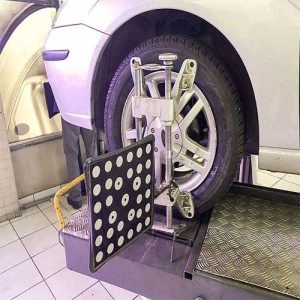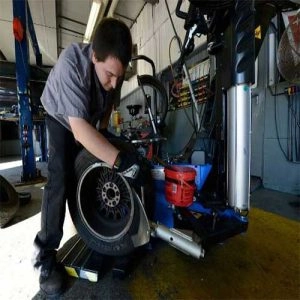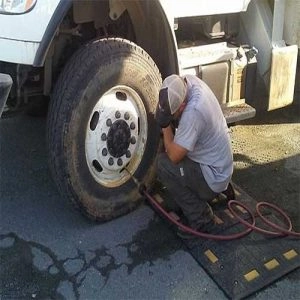Balancing the tires is one of the most important criteria for maintaining safe driving and avoiding painful or sometimes catastrophic accidents - God forbid. Unfortunately, this process is often overlooked by people and its importance is only recognized once it's too late.
In this article, we will discuss the process of tire balancing, its types, its importance, and when it should be done.
How can tires be balanced and what is their importance?

Tire balancing can be done by adding specific weights made of lead on each side of the wheel rim after identifying them using a specialized tire inspection device. The purpose of these weights is to equalize the weight on both sides of the wheel rim so that the tires become balanced and can rotate correctly.
In addition, it is always necessary to properly align the modern tires before driving the car, to ensure their optimal performance and aim for a longer lifespan of the tires. Not aligning the tires poses significant risks. Even if the tires are new, they should be aligned before driving the car, because in fact, all tires are not entirely perfect and inevitably contain flaws. No matter how small these flaws are, their impact and damage would be significant when driving at high speeds. Besides, the driver will not achieve good performance while driving, nor will he feel the required comfort when driving the car until the tires are properly aligned.
Types of Tire Balancing

Ground Balancing
This method is one of the newest that can be followed for balancing car tires. It is accomplished by simulating driving the car under conditions similar to real-life circumstances. This operation is performed using a machine containing a large roller that exerts pressure on the tire and rotates it at a very high speed, enabling all defects present in the tire to be detected.
The machine contains sensors that detect and measure all tire defects within the previous simulation. In addition, this method helps to keep the tires balanced with the suspension system. The machine might not be able to access all points at once but this method remains the most accurate and reliable. It is relied upon in balancing unbalanced tires, no matter how complex the situations. The most prominent drawback of this kind of balancing is that it's expensive, not to mention that tires need to be balanced every time they are removed from their place.
Dynamic Balancing
Dynamic balancing is performed by placing the tire on a machine that causes it to rotate at specific speeds, but you will not be able to make it spin at high speeds like the machine does in the previous type of balancing. Typically, the speeds at which the tire spins in dynamic balancing range only between 25 and 60 kilometers per hour, and can sometimes reach up to 100 kilometers per hour. During this rotation, the sensors in the machine measure the entire weight of the tire in order to determine the places where the weights should be distributed, as well as to identify the amount of weight that needs to be distributed on both sides of the tire rim.
As we mentioned in the previous paragraph, this method will not be more accurate than ground balancing, due to the relatively low speeds used in tire testing in this type of balancing. It is always preferable to choose a workshop with a machine that can rotate the tires at a speed of at least 90 kilometers per hour. One important thing to note is, if the car's suspension system is bad, you will not benefit from dynamic balancing.
Also read:The components of the exhaust system and symptoms of its damage.
When should the tires be balanced?

Many people often have questions such as "How do you know when the tire needs balancing?" or "When should the tires be balanced?" and other similar questions. In this paragraph, we will provide answers to these questions. We will highlight the main signs that indicate a potential issue with tire balancing, these signs are:
Steering Problems
Difficulty in steering control and inability to manage it may be among the most prominent indications that the tires need to be balanced. Driving becomes uncomfortable and can pose a risk to passengers, as the driver will not feel the smoothness they are accustomed to when driving.
Increased fuel consumption
If the car tires are poorly balanced, it will increase resistance, forcing the engine to exert more effort to keep the car moving at the required speed. This added strain on the engine leads to the consumption of more fuel. However, it should be noted that an increase in fuel consumption could also be caused by a decrease in air pressure inside the tires, meaning that it's not necessarily due to poorly balanced tires.
The car's suspension system is damaged.
Under normal circumstances, car suspension components, such as shock absorbers, can last for more than 80,000 km without encountering issues. However, if you notice that they're wearing out quickly, it could indicate that the tires need balancing, as suspension system components can be under extreme pressure if they are not properly aligned.Wheel BalancingThis is bad, as it will reduce its lifespan and cause rapid damage.

Comments